
We at Stamen have had the pleasure of working with the World Health Organization’s Department of Immunization, Vaccines, and Biologicals going back to 2015. Annually we have helped them to develop their report of global vaccination rates (you can see previous work here: 2016, 2017). The following post highlights some of the key findings from this years report.
Just 10 countries account for 60% of unprotected children
Only 10 countries account for 11.7 of the 19.4 million under and un vaccinated children in the world (60%). This list includes some countries with moderate coverage and very large birth cohorts, and other countries with substantially lower coverage.
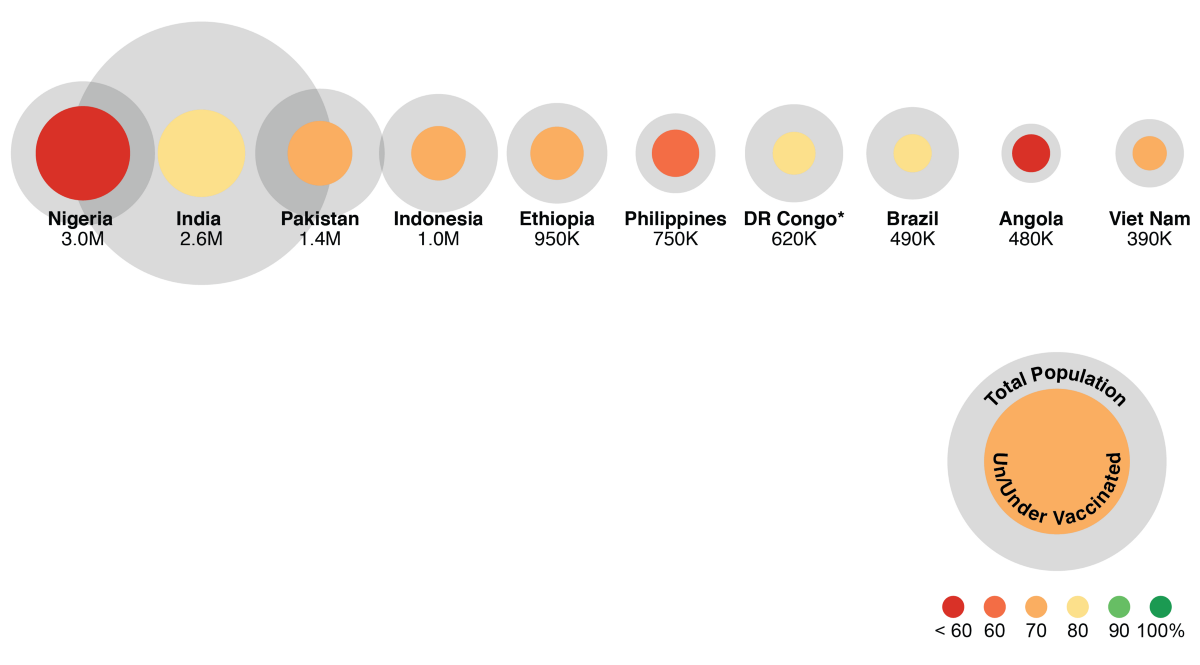
Un and under-vaccinated children disproportionally live in fragile countries
Of the 19.4 million infants who are not fully vaccinated, 8.6 million (44%) live in 16 countries that are polio endemic, fragile or affected by conflict.
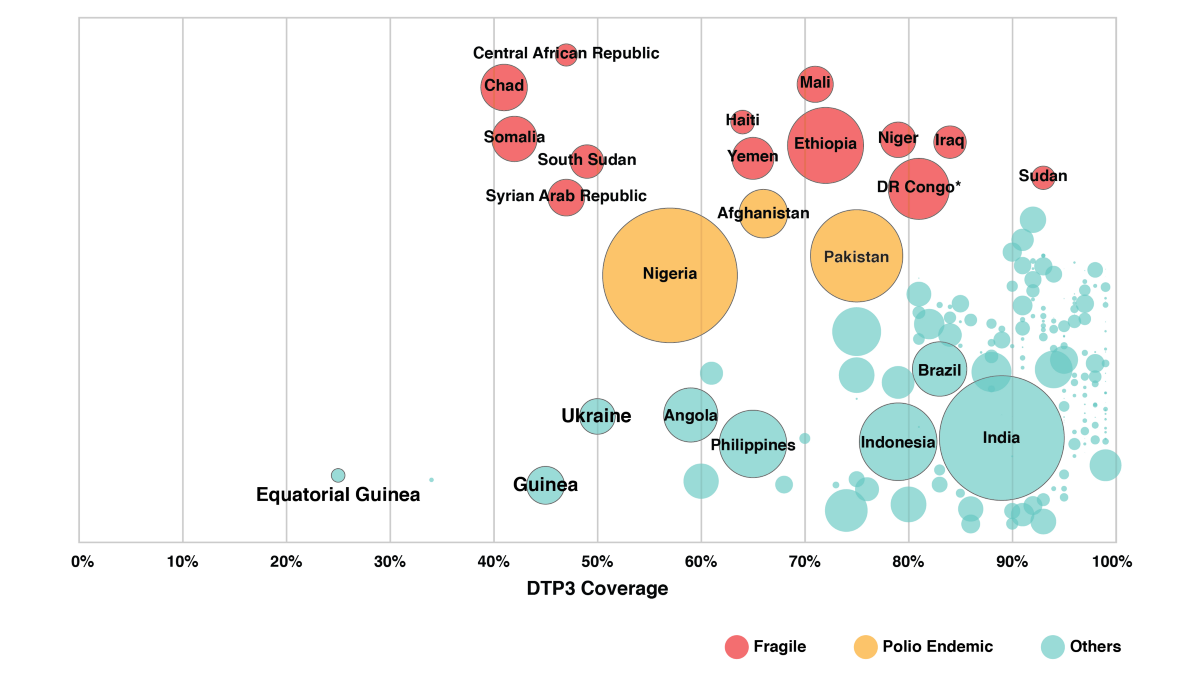
2030 projections in countries with very low immunization coverage
In 11 countries, DTP3 coverage was below 60% in 2018. Of these 11 countries, 10 are projected to have more children born each year through 2030, making the challenges of vaccine coverage even greater.
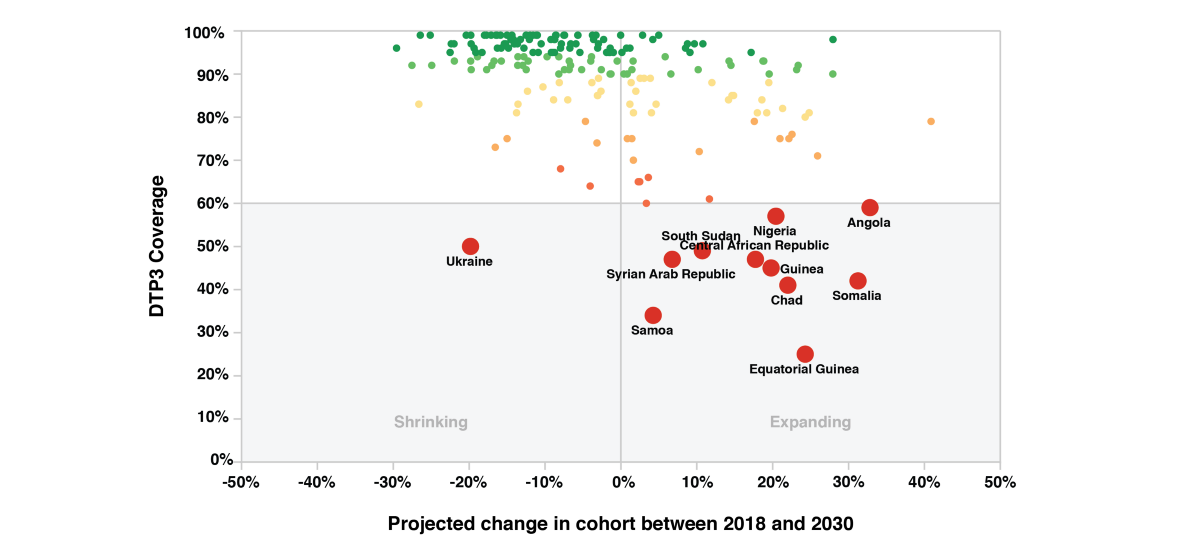
In the countries that are most at risk of polio, routine coverage remains too low to prevent outbreaks
In order to protect children from the polio virus, 3 doses of polio vaccine in the first year of life are required. Furthermore, where Oral Polio Vaccine (OPV) is used, WHO recommends that children receive an additional dose of Injectable Polio Vaccine (IPV).
However, combined coverage with OPV and IPV remains too low in the countries that are considered to be most at risk: out of the 60 million infants in those countries, 18.5 million (31%) don’t receive a dose of IPV, and 12.7million (21%) remain unvaccinated with 3 doses of OPV delivered through routine services.
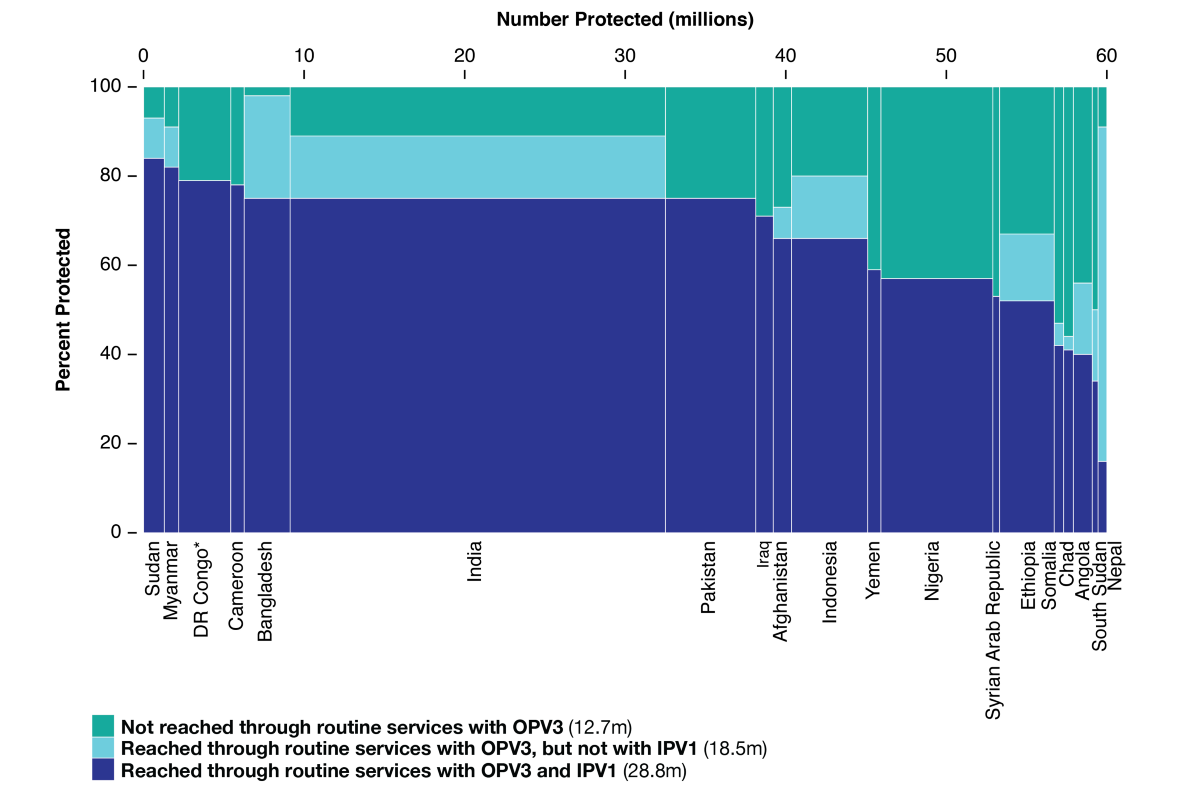
Most countries with sizable numbers of un-and under vaccinated children benefit from Gavi Alliance support.
However, under current policies that could be reduced significantly when India, Nigeria, Papua New Guinea and the Solomon islands transition out of Gavi support. Other countries like Pakistan are approaching the threshold but are still counting large numbers of unvaccinated children.
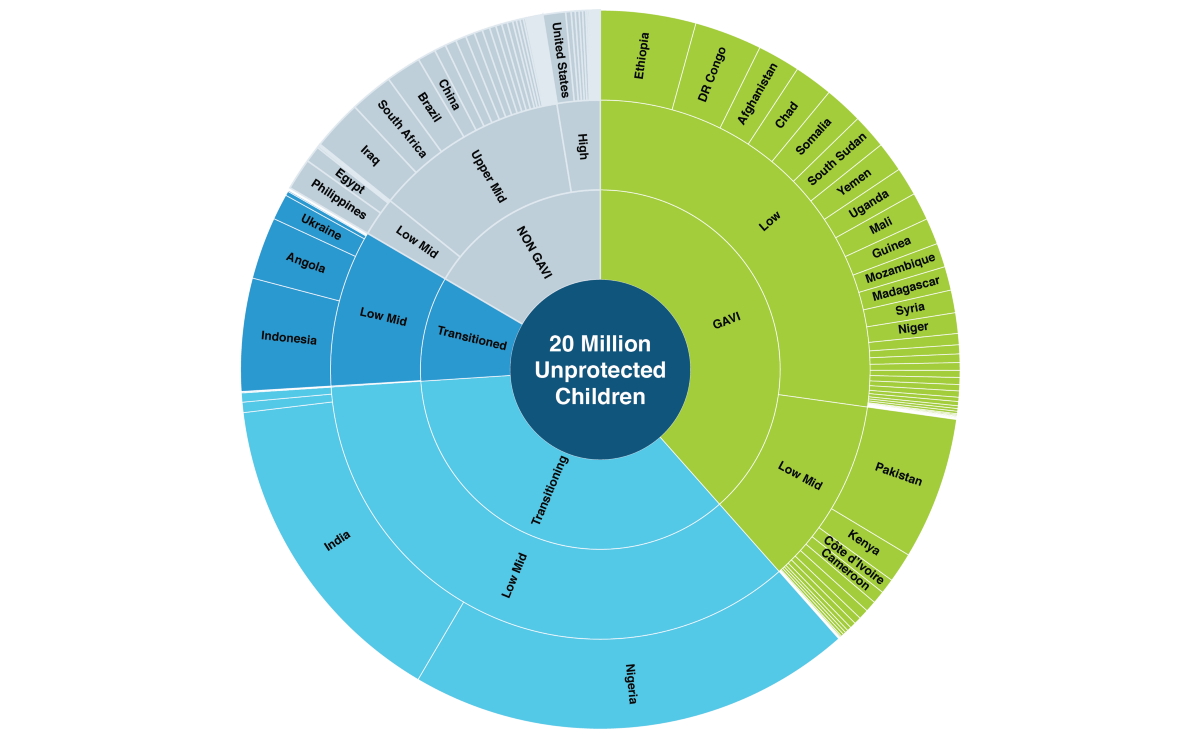
Thanks again to the team at the WHO for allowing us to make all the code for this project open-source. You can view the repo here.
